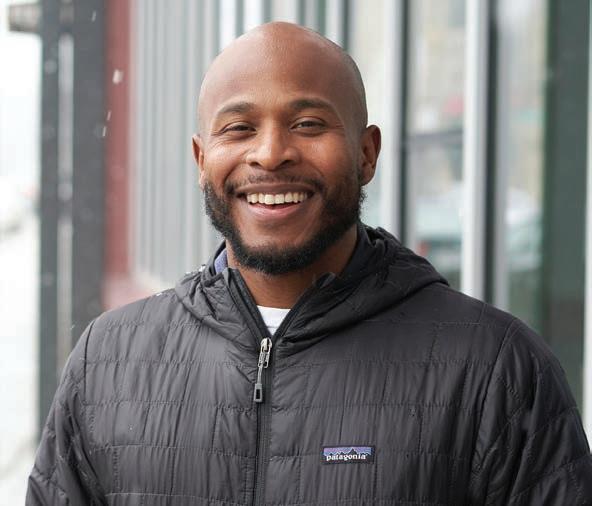
3 minute read
Richard Diaz Fights for Families with Lead
Photo by Erin Bloodgood.
Richard Diaz Fights for Families with Lead Poisoning
BY ERIN BLOODGOOD
Three thousand, nine-hundred and twelve children up to the age of six were reported being poisoned by lead in Wisconsin in 2018—and that’s with a testing rate of only 10 percent of children. The fact is simple. There is not enough being done in Wisconsin to prevent lead poisoning and to help families who are being lead poisoned.
“There is no safe exposure level,” says Richard Diaz, founding member of the Coalition on Lead Emergency (COLE), a volunteer-run group advocating for policy and funding to address the lead crisis. “Even the lowest blood lead levels can affect the developing brain and central nervous system having irreversible effects.” Lead exposure has been shown to cause diminished academic abilities, increased attention deficits and damaging behaviors. Unfortunately, communities of color and lower-income residents are impacted most by lead.
For Diaz, this work is very personal. He has seen the impacts lead poisoning has had on loved ones who have trouble keeping jobs and have extreme behaviors. Those firsthand experiences caused him to dedicate himself to helping others with lead poisoning, which eventually led him to COLE. In 2018, he brought community groups and volunteers together, and was integral to the beginning of COLE.
THE ACTIONABLE LEVEL OF LEAD IN THE BLOOD
Early on, COLE set out to lower Wisconsin’s actionable level of lead in the blood stream according to the state statute. The “actionable level” refers to the specific amount of lead one must have in their blood for the health department to respond to the problem. At the time, Wisconsin defined someone as lead poisoned if they had 20 micrograms per deciliter (μg/dL) of lead in their blood, even though the Centers for Disease Control (CDC)’s definition is only five μg/dL. That means the health department was not responding to anyone who had lower than 20 μg/dL of lead in their blood. Even then, the health department didn’t have the funds to respond to all children and families who test at 20 μg/dL.
“The health department has had its struggles because it’s been under resourced,” says Diaz. “The health department gets about two percent of the city budget when the police get like half.” COLE, led by Diaz, actively worked with health department officials and advocated at the 2021 state biannual budget hearings for more money to address lead poising. Thanks to their work, the health department received $26 million from the American Rescue Plan which reduced the state’s actionable lead level to 10 μg/dL.
ADDRESSING LEAD POISONING, BOOSTING THE ECONOMY
As Diaz explains over and over, addressing the lead crisis will not only benefit the health of our residents, but it will boost the economy and save the state billions of dollars. “Wisconsin reports that if lead poisoning in children were completely eliminated, annually the state would save $7 billion in costs for medical treatments, special education, crime, and juvenile delinquency,” he says.
COLE focuses a lot of its efforts on workforce development because removing lead from homes and water presents a huge opportunity to create new jobs and train workers. Lead service lines need to be replaced around the state and homes need to be lead abated (removal of lead-based paint), but the state doesn’t have enough trained workers to do these jobs, much less the money to pay for these projects.
Recently, COLE successfully negotiated $3 million in funding to go to Employ Milwaukee, the workforce investment board of Milwaukee County. That money will allow them to recruit, train and hire 250 lead abatement workers over the course of two years.
This is a big step, but not nearly enough to prevent lead poisoning across the state. “We need an army of lead abatement workers,” says Diaz. “We need those to be Black and Brown workers especially.”
Our state—and this country—have a long way to go. COLE has successfully brought in millions of dollars to improve the lives of communities with lead exposure, but there are still thousands of people across the state who face this health threat. “We’re still going to organize so that families are protected,” states Diaz, “so that we have access to economic mobility for folks, and so families who are poisoned by lead are taken care of.”
Learn more about COLE at coalitionleademergency.org
Erin Bloodgood is a Milwaukee photographer and storyteller. See more of her work on her website at bloodgoodfoto.com.











